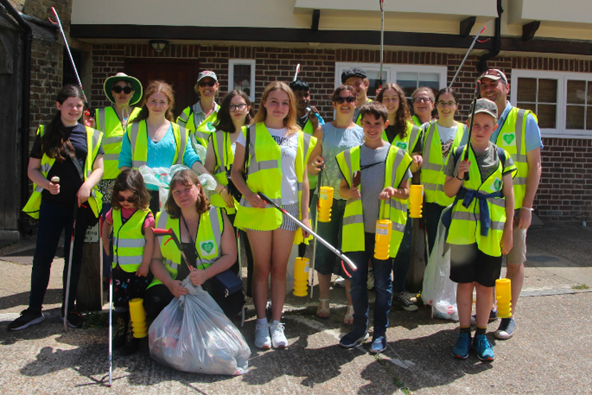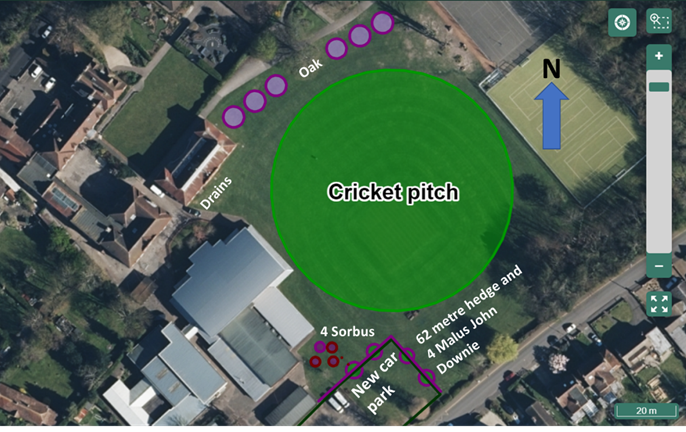Tree Planting
A big part of our work has been improving the biodiversity of our school grounds. Trees are not cheap and so we researched whether there are any charities that could help us. We came across the Tree Council and put together an application to them and won a £1,800 grant. We also carried out a litter pick in Sandwich during the Folk & Ale Festival, raising £350 in donations.

Litter picking team in Sandwich
As part of our application to the Tree Council we had to decide what species to plant and map where the trees would be planted. The trees that we chose to plant are Cherry (Prunus Umineko) and Rowan (Sorbus Aucuparia ‘sheerwater’). The cherry trees are planted along the path in our school, lining up with the ‘Big Oak’ that has been growing there for decades. Cherry trees, which are native to the UK, provide a natural food source for local wildlife. While pollinators such as bees and butterflies can feed on nectar from the cherry blossoms, birds can feed on the fruit itself. We chose Rowan trees because our school already had one in a corner of the field, and we wanted to extend this corner of biodiversity. Similarly to the cherry trees, Rowan supports pollinators with the nectar from its flowers and birds such as blackbirds and mistle thrush with its vibrant red berries. In addition to this, moth caterpillars can be found feeding on the leaves of the plant.
We met with the school’s Estates Manager and Business Manager to get them to agree to our plan before we sent off our application to the Tree Council.

The end of winter and start of spring are the best time to plant the trees as this is when they are dormant, and less likely to be damaged by their sudden change of location. The school’s groundskeeping company gave us a tutorial for how to plant the trees and tie the trees to their stakes. We’ll be back in the autumn to plant more, including around the new car park on the Home Field.

Tree planting team – March 2023
